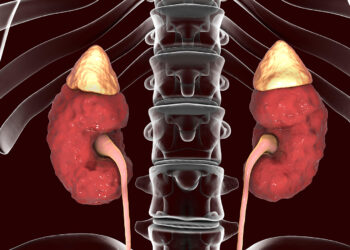MINNEAPOLIS — Irregular night shift work is well known for its potential to cause sleep problems, but a new study suggested it can also be associated with an increased risk of developing migraines.
Overall, the systematic review and meta-analysis showed that individuals engaged in irregular shift work had a 61% higher likelihood of developing a migraine compared with fixed-shift workers.
Previous research has shown disruptions in circadian rhythm can increase the risk for migraines. Shift work in general has been linked to a lower quality and quantity of sleep, but individuals can take steps to mitigate the adverse impact night shift work has on sleep.
However, the nature of irregular night shift work can exacerbate circadian disruption.
While menstrual migraines have a hormonal trigger and chronic migraine is based on frequency, migraines associated with irregular shift work are due to rotating shifts, quick returns to work of less than 11 hours, and amplified triggers such as bright lights and dietary irregularities, Yohannes Woldeamanuel, MD, first author and assistant professor of neurology at the Mayo Clinic in Phoenix, told Medscape Medical News.
This type of migraine among individuals engaged in irregular shift work should be its own diagnostic entity separate from other migraine subtypes, the researchers explained.
“Shift work migraine disorder is distinguished by its etiology: Chronic circadian disruption from irregular night shift work,” Woldeamanuel said. “Mechanistically, it most likely involves hypothalamic dysregulation and circadian gene alterations, proposing a distinct phenotype requiring specific diagnostic criteria and management.”
The findings were presented here at the American Headache Society (AHS) Annual Meeting 2025.
Screening Is Critical
In a systematic review and meta-analysis, Woldeamanuel and colleagues identified 51,642 participants across 17 cross-sectional and three cohort studies who engaged in irregular or rotational shift work — defined as having irregular night hours that changed every few days — who were compared with individuals who had nonrotational or fixed night shift work. Overall, 75% of the participants in the study were women.
The results showed participants who engaged in irregular shift work had significantly higher odds of developing migraine (odds ratio [OR], 1.61; 95% CI, 1.32-1.96; P < .05).
In three studies with data from 28,764 participants, the researchers found women were significantly more likely to develop migraine compared with men (OR, 2.48; 95% CI, 1.85-3.33; P < .05).
The finding that women who engage in irregular shift work are at greater risk for migraine than men warrants further study, the investigators noted.
“Future research should focus on longitudinal studies to establish causality, neuroimaging to explore hypothalamic and other brain area changes, and trials evaluating mitigation strategies,” Woldeamanuel said. He noted he is conducting a clinical trial of diagnostic criteria and evaluating circadian interventions in shift workers who have chronic migraine.
“These findings support tailored management for shift workers to prevent migraine exacerbation,” said Woldeamanuel. “Screening shift workers for migraine, especially those with rotating schedules, is critical.”
Shift workers can lower circadian system disruption by limiting the number of consecutive night shifts to three or fewer, shortening the duration of the shifts, allowing for 48 hours or more of recovery time, reducing the number of “quick return” shifts with less than 11 hours of turnaround time, and using a shift rotation that moves the shift from morning to evening to night.
The use of circadian resetting tools such as blue blockers and timed light exposure can also help reduce the risk for migraine, the researchers said.
Researchers proposed shift work migraine disorder be considered as a distinct subgroup of other migraine types.
Under the proposed criteria, shift work migraine disorder would meet the criteria for migraine with or without aura and be present in a patient with a history of irregular shift work for at least 3 months.
The migraine should start or be worsened as a result of shift work within 24 hours of a shift change, and the patient should have evidence of circadian disruption, such as sleep-wake irregularities or excessive daytime sleepiness. Shift work migraine disorder would also be a diagnosis of exclusion, considered when it is not explained by a different medical condition or headache disorder.
“These criteria ensure the disorder is distinct from other migraine subtypes (eg, chronic migraine, menstrual migraine) by tying it to a specific environmental trigger (shift work) and circadian pathophysiology,” the researchers wrote in their study.
Separate Diagnosis Warranted
Commenting on the research for Medscape Medical News, Noah Rosen, MD, neurologist at Northwell Health in New York City, said he isn’t convinced shift work migraine disorder should have its own distinct diagnosis. He noted that headaches associated with air travel are very similar but are not in a different diagnostic category.
“This is an interesting area, but with no great data to separate it from migraine with a sleep issue as trigger. It does not suggest a novel pain pathway or differentiation from migraine with other known sleep triggers,” Rosen told Medscape Medical News.
Rather than real-world descriptions, what is needed is the collection of more data with a more structured testing of the hypothesis, Rosen said. Evaluations with multi-sleep latency studies, modified sleep schedules, and preclinical studies would help researchers understand more about migraines associated with irregular shift work.
“While some of the preliminary work is interesting and suggestive of an underrecognized and undertreated situational trigger, there is little to suggest that it would merit a separate diagnosis,” he said.
This study was supported by the National Institute of Neurological Disorders and Stroke of the National Institutes of Health. The authors reported no relevant financial relationships. Rosen has been a consultant for Allergan/AbbVie, Eli Lilly, Lundbeck, and Pfizer; served on the speaker’s bureau for Allergen/AbbVie; been an editor for Springer; and been a speaker for the American Headache Society.
Source link : https://www.medscape.com/viewarticle/new-headache-diagnosis-proposed-shift-work-migraine-disorder-2025a1000gnb?src=rss
Author :
Publish date : 2025-06-23 11:28:00
Copyright for syndicated content belongs to the linked Source.












